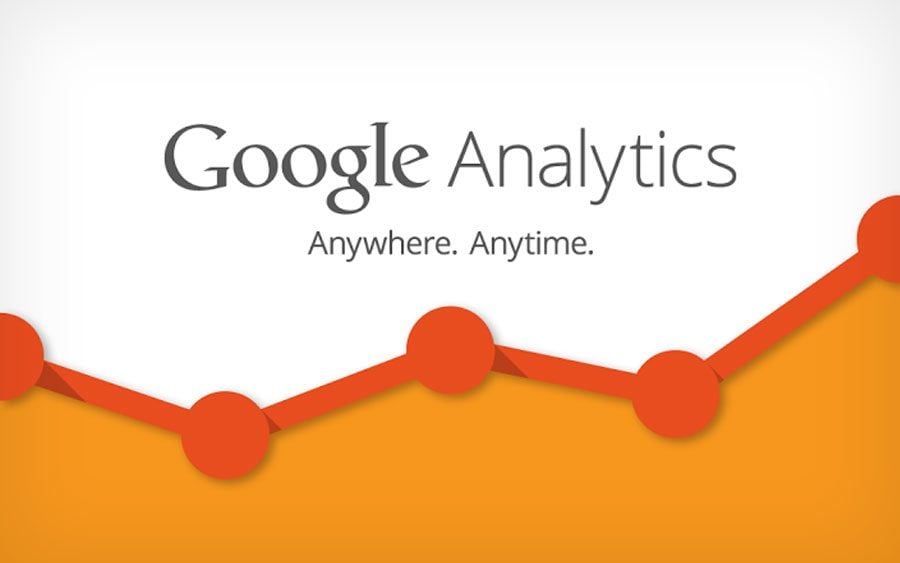The design of your site is an important asset in attracting new visitors and retaining the existing ones. Mobile website is no exception. If you are struggling to drive leads through your website, you have to think beyond the boundaries. The right design of your site plays a major role and what if it can be designed a bit different from the crowd. Well! How about designing your site with Google Analytics? As we know Google Analytics allow you to view the detailed information about the users of your website visitors and their action on the site so why not use such data and accordingly design your site?
Isn’t it a practical idea to make your brand more approachable for mobile users? I am sure at the end of the post you will find it quite interesting. Let us find out the ways to design mobile website with Google Analytics.
Design by tracking who and whatpercentage of visitors is from mobile device
Google analytics help to track who your visitors are and what are they doing on your site. It shows how many visitors are new how many are returning back to the site. How long they spend on your site and which pages they are most likely to land on and leave. Also you can find their demographic data with analytics including average age of the site viewers or their geographical location. Also you can view the click paths that the users take once they visit your site. So this behaviour flow visualization allows you to design the design more accurately. For instance, as you see where they click next, the site landing page can be designed accordingly.
Design on basis of the devices an audience uses
Analytics highlight the issues with usability on a specific tablet, mobile phone or mobile operating system. For example if Google Analytics shows a lower bounce rate in iPhone as compared to tablet, you might think twice how to make your website appear on such devices. However, if you think that by simply cramming the desktop website into a mobile site would solve the purpose, then you are certainly wrong. Your mobile should offer users a positive experience. Make your website perform more effectively with a responsive layout that prevents the need for the users to click and zoom to fill out form in their phone’s browser.
Design according to the user’s mobile browser and operating system
With Google Analytics showing the main browsers and operating system users use to access your website, your can accordingly add a column for operating system version in your site. Also if you find that a significant number of audiences are still using Internet Explorer 8 as the browser, or a small percentage of visitors coming from mobile devices, you can focus on designing your website to make it usable on old systems.
Design as per the customized information and dimensions
Information in Google Analytics can be customized with custom variables becausenot all website audiences are the same. Customization allows you to see information for particular demographic groups, their product information, purchase history or behavioural data. Custom variables in Google Analytics define additional segment of the visitors. For instance, if you have designed your website with password protected section, you can use custom variable to segregate the logged in and the non-logged in users.
Analytics and its Advanced Segment
Google Analytics provides three different segments about mobile-
- Mobile visit
- Tablet visit
- Desktop visit
And segment by devices and screen size
The advanced segments are important because user behaviour on mobile is quite different from tablets and desktop users. With advanced segment you can compare the performance of mobile visitors including their visit duration, conversion rate or bounce rate. Let us find out how advanced segment can be utilized to design your mobile site.
Designing mobile site pages
As you can look at the top pages viewed by the mobile users, you know which navigation elements to put on mobile. Analytics also help you to identify the important pages that mobile users find it difficult to search.Additionally, comparing the top pages on mobile and desktop help you to understand the goals of the individual user type. For instance desktop users might browse profoundly through the product inventory while the mobile users might just find an address to your nearest location.
Similarly, with Google Analytics, you can also see last pages people view on your site. This helps you to filter any mobile-specific problems that might hinder visitors from completing their search. Often you may find mobile users leaving your site on that page that describes your services. To fix this issue, you can design headers reading ‘CONTACT US’ and place it at the top of the page.
Placing the content for the mobile visitors
Analytics tells you which pages mobile visitors are looking at. And accordingly, you may find content consumed on mobile devices is different from other devices. For instance, regular visitors will search for sections like admissions, academic department or sports department in a school’s website while the mobile visitors will find some other useful sections such as how long the library remains open? The schedule of school bus or how long the canteen is opened? This help to prioritize the navigation of the content for the mobile site. You can make these pages easily accessible for the visitors instead of placing them 5 clicks away from the home page.
Design on basis of the top paths taken by site users
With Google Analytics showing the paths people take through your website, you can decide which pages should be made prominent for mobile size. For instance, if you see your ‘ABOUT PAGE’ is least viewed by your visitors, you can accordingly link it in the navigation bar. In a nutshell, yourmobile site design is highly influenced by Google Analytics.
